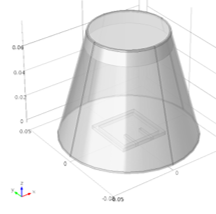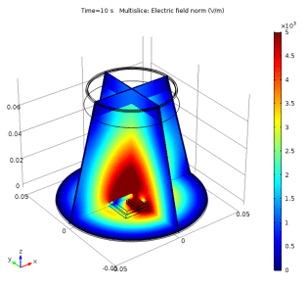Optimization of Miniaturized Resonant Microwave Cavities for Use in Q-Thrusters
Student: Josh Pennington
Degree: M.S., August 2017
Major Professor: Dr. Adam Huang
Research Area(s):
Nanoscience & Engineering
Background/Relevance
- Quantum vacuum plasma thrusters (Q-thrusters) are a recently discovered type of propulsion system that are hypothesized to operate due to momentum interaction with the virtual particles that make up the quantum vacuum.
Innovation
- Q-thrusters are hypothesized to produce thrust as long as they are powered. They do not require reaction mass. This innovation could revolutionize space exploration. As long as there is electricity, the thruster has the ability to accelerate the spacecraft.
Approach
- Model Q-thruster cavities and driving antennas in COMSOL to build an understanding of electrical and thermal effects and their possible contribution to real world experimental error.
- Develop a Q-thruster module for use on a CubeSat.
- Construct a sensitive torsion pendulum that can measure force in the μN range.
- Use the force pendulum and Q-thruster to investigate physical theories governing the behavior of Q-thrusters.

Key Results
- Used COMSOL to make RF and heat transfer Multiphysics models to simulate microwave heating effects on the cavity.
- Began preliminary design considerations for Q-thrusters, antennas, and test equipment.
- Partnered with NASA EagleWorkslaboratories to develop understanding of Q-thrusters.

Conclusions
- Industry review of available miniaturized RF equipment has been completed.
- Necessary RF equipment has been designed and modeled in COMSOL including: Resonant cavity, micropatchantennas, and dielectric inserts.
Future Work
- Construct a sensitive torsion pendulum.
- Construct a Q-thruster.
- Use coupled Q-thrusters to investigate the current theory of operation.
